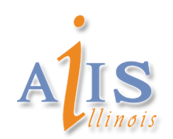|
Abstract - Machine Learning || Joseph Keshet
Toyota Technological Institute at Chicago
In discriminative machine learning one is interested in training a system to optimize a certain desired measure of performance, or loss. In binary classification one typically tries to minimizes the error rate. But in structured prediction each task often has its own measure of performance such as the BLEU score in machine translation or word error rate in speech recognition. The most common approaches to structured prediction, structural SVMs and CRFs, do not minimize the task loss: the former minimizes a surrogate loss with no guarantees for task loss and the latter minimizes log loss independent of task loss. In the first part of the talk we present a theorem stating that a certain perceptron-like learning rule, involving features vectors derived from loss-adjusted inference, directly corresponds to the gradient of task loss. Empirical results on phonetic alignment are presented surpassing all previously reported results on this problem on the TIMIT corpus.
Slides <link |
||||||||||||

